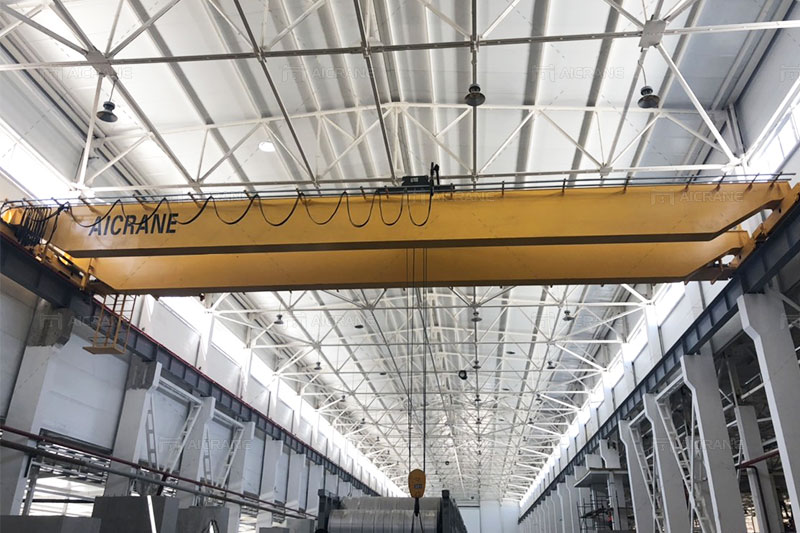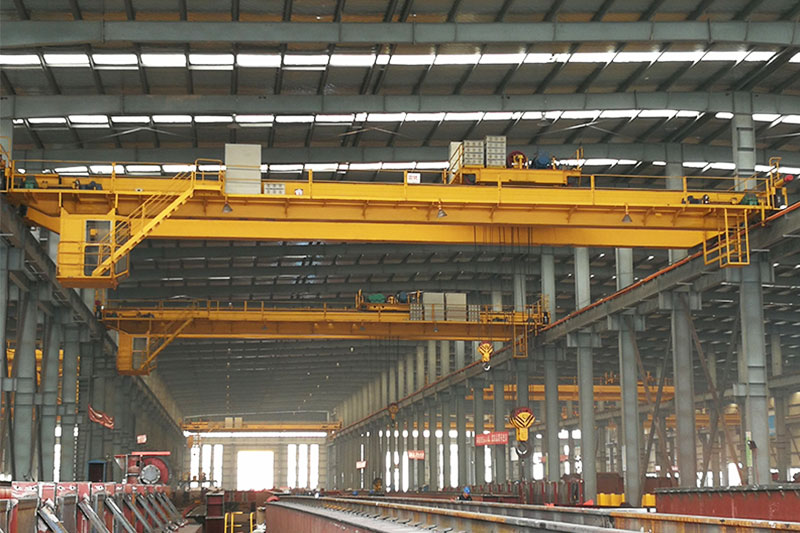When it comes to handling heavy loads in industries such as manufacturing, construction, steel production, and logistics, the choice of lifting equipment plays a crucial role in improving efficiency, safety, and overall productivity. For lifting loads around 30 tons, bridge cranes are often considered one of the most versatile and reliable options. However, they are not the only solution available. In this article, we will compare bridge cranes with other common lifting equipment for 30-ton loads, such as gantry cranes, forklift trucks, and hoists, to help you determine the best choice for your specific needs.

What is a Bridge Crane?
Bridge cranes, also known as overhead cranes, consist of a hoist, trolley, and a bridge structure that moves along two parallel tracks mounted on buildings or structures. These cranes are typically used in facilities with high ceilings, where they can lift and move loads horizontally across the workspace. A 30-ton bridge crane is designed to handle heavy-duty tasks such as lifting steel beams, machinery, and large equipment.
Advantages of Bridge Cranes
- Efficient Load Handling: Bridge cranes provide exceptional lifting and moving capabilities in a confined space. They can lift loads as heavy as 30 tons, and because of their design, they can move these loads both horizontally and vertically with minimal space requirements.
- Space Optimization: Since bridge cranes operate above the ground, they free up valuable floor space for other operations or equipment. This is particularly important in factories or warehouses where floor space is limited.
- Versatility: With adjustable hoists, trolleys, and control systems, bridge cranes can be customized for specific applications, making them suitable for various industries, including manufacturing, shipping, and construction.
- Precision and Control: Bridge cranes offer fine control over load positioning, ensuring accuracy when placing heavy materials or components. This is particularly beneficial when lifting delicate or precision-required loads.
- Increased Safety: The high overhead positioning and ability to operate at a distance from the load provide a safer environment for operators. Furthermore, advanced safety features such as load limiters, anti-sway technology, and remote control options reduce the risk of accidents.

Comparing Bridge Cranes with Other Lifting Equipment
1. Gantry Cranes
Gantry cranes are similar to bridge cranes in that they also use a hoist, trolley, and bridge structure to lift heavy loads. However, the key difference lies in their mobility. While bridge cranes are fixed and mounted to the structure of a building, 30 ton gantry cranes are freestanding and move along rails that are placed on the ground.
Advantages of Gantry Cranes:
- Mobility: Gantry cranes are typically more mobile and can be moved between different work areas. This is useful in outdoor environments or large open spaces where equipment needs to be shifted around frequently.
- Cost-Effective for Temporary Use: If you don’t need a permanent overhead crane system, a gantry crane may be more cost-effective. They can often be assembled and disassembled quickly, making them ideal for temporary projects.
Disadvantages of Gantry Cranes:
- Space Requirements: Since gantry cranes require space to move freely, they are less space-efficient compared to bridge cranes, especially in confined or indoor spaces.
- Limited Load Capacity: While gantry cranes can handle 30-ton loads, their capacity may be somewhat less than that of a bridge crane due to the need for sturdier structural elements and the possibility of needing more space for mobility.
Conclusion: Gantry cranes are more flexible in terms of movement and are typically preferred for outdoor or temporary projects, but bridge cranes are more efficient for permanent, high-capacity, and space-optimized solutions in factories or warehouses.
2. Forklift Trucks
Forklift trucks are one of the most common types of lifting equipment used in warehouses, construction sites, and manufacturing plants. They are primarily used to lift and transport heavy loads over short distances.
Advantages of Forklifts:
- Portability: Forklifts can be moved easily throughout the facility, offering high flexibility in terms of load handling and transport.
- Accessibility: Forklifts can be operated in areas where larger lifting equipment may not fit, making them ideal for tight spaces or narrow aisles.
- Cost-Effective for Smaller Loads: Forklifts are generally more affordable compared to bridge or gantry cranes and are more suitable for lifting smaller loads, though models exist that can handle up to 30 tons.
Disadvantages of Forklifts:
- Limited Capacity: While there are forklifts capable of lifting 30 tons, they often come with a smaller lifting height and less stability when compared to bridge cranes.
- Less Precision: Forklifts lack the precise control and accuracy that bridge cranes provide when it comes to positioning loads. This can be a significant disadvantage when handling large, delicate, or critical equipment.
- Manual Operation: Forklifts typically require more manual operation compared to the semi-automated systems available with bridge cranes, which can reduce efficiency in some cases.
Conclusion: Forklifts are ideal for moving smaller loads across short distances, but for 30-ton loads, they often fall short in terms of stability, precision, and lifting capacity compared to bridge cranes.
3. Hoists
Hoists are specialized lifting devices used to raise and lower loads vertically. They are typically mounted to a fixed structure such as a building or a beam and are often used in conjunction with cranes or other lifting devices.
Advantages of Hoists:
- Cost-Effective: Hoists are generally less expensive compared to bridge cranes and gantry cranes, making them a good choice for smaller operations or low-budget projects.
- Compact Design: Hoists are smaller and more compact, making them suitable for limited spaces where other lifting equipment may not be practical.
Disadvantages of Hoists:
- Limited Horizontal Movement: Unlike bridge cranes, hoists only offer vertical lifting, making them less versatile for handling heavy loads across large areas.
- Lower Load Capacity: While hoists can be used for 30-ton loads, they generally have a more limited load capacity than a bridge crane and often require additional equipment or structures for horizontal movement.
Conclusion: Hoists are great for small-scale or vertical lifting applications but lack the versatility and heavy-duty capabilities required for large, multi-dimensional tasks like those handled by bridge cranes.
4. Cranes with Jib Arms
Jib cranes are another alternative lifting equipment used to handle heavy loads in workshops, warehouses, or construction sites. These cranes have a horizontal arm (the jib) that extends out from a fixed support, allowing for lifting and moving heavy loads within a limited range.
Advantages of Jib Cranes:
- Compact and Flexible: Jib cranes are more compact than traditional bridge or gantry cranes, allowing for use in tight spaces.
- Cost-Effective: Jib cranes tend to be less expensive than larger cranes while still offering lifting capabilities for up to 30 tons.
Disadvantages of Jib Cranes:
- Limited Range: Jib cranes are generally limited in their range of motion compared to bridge cranes, making them less suitable for large-scale lifting tasks across wide areas.
- Lower Capacity: While jib cranes can handle 30-ton loads, they are not typically designed for the continuous heavy lifting that a bridge crane can perform.
Conclusion: Jib cranes offer flexibility and cost efficiency but do not provide the same load handling capacity or range as bridge cranes.
Final Thoughts
When choosing lifting equipment for 30-ton loads, it is important to assess the specific requirements of your facility, project, and budget. Bridge cranes stand out for their high capacity, precision, and space-saving design, making them ideal for indoor and large-scale operations. However, other lifting equipment, such as gantry cranes, forklifts, hoists, and jib cranes, may be better suited for particular tasks depending on mobility needs, load handling capacity, and available space.
Ultimately, selecting the right lifting equipment comes down to understanding your operational needs and balancing cost, performance, and safety features to maximize efficiency in your business.
